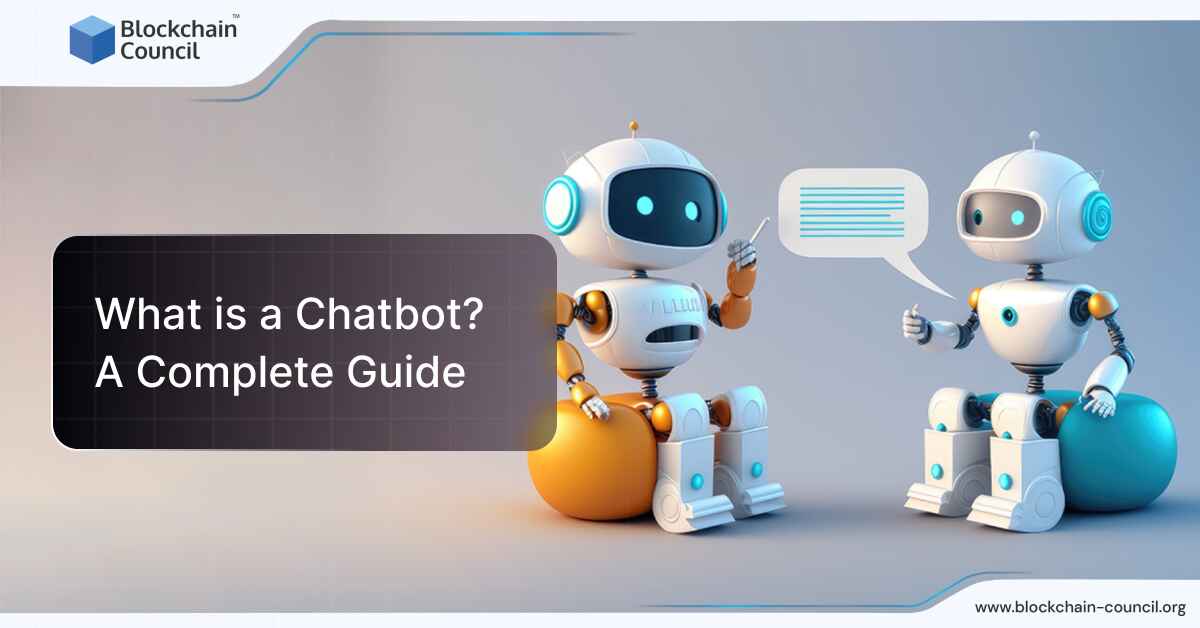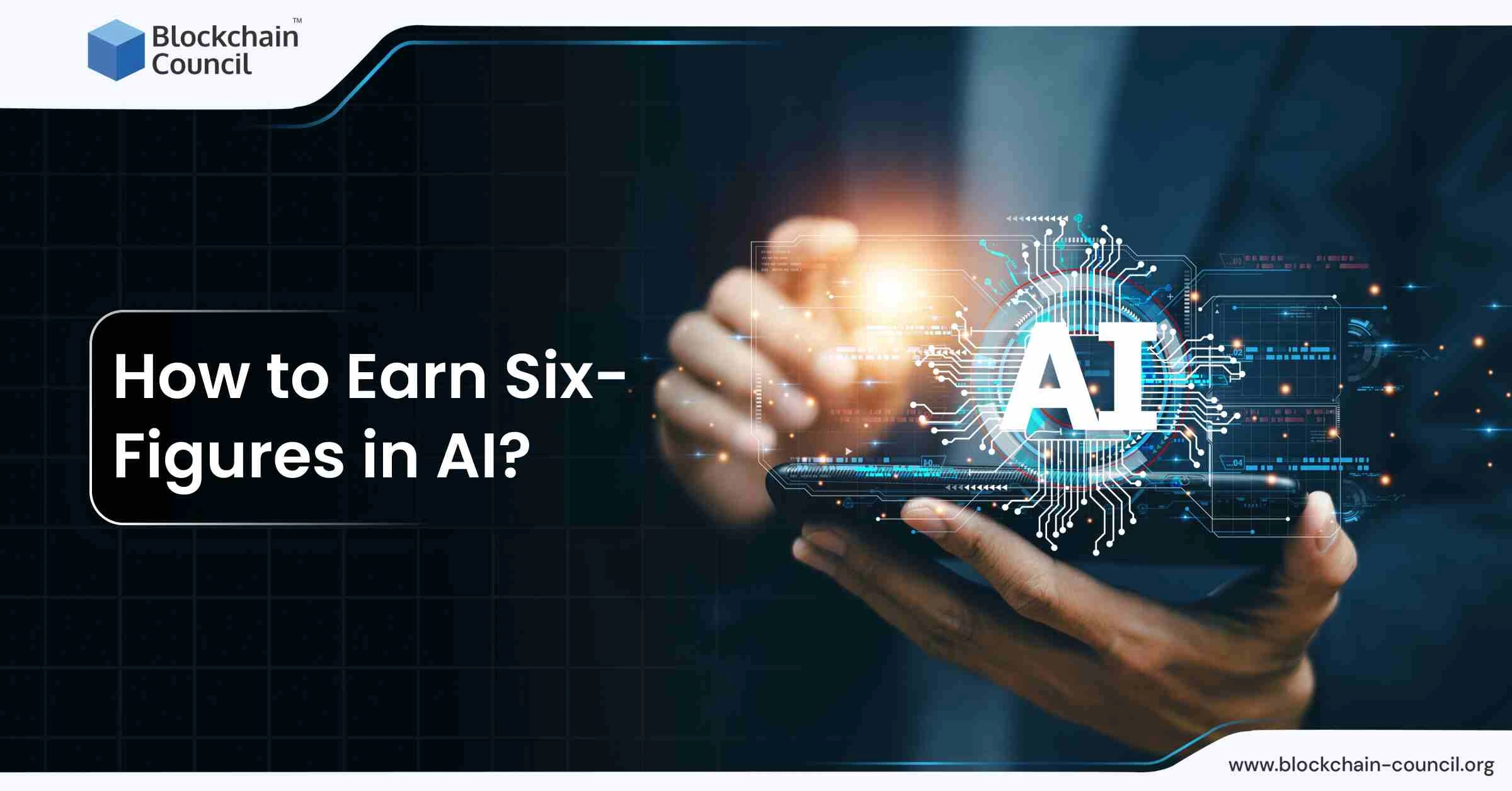
- Blockchain Council
- September 13, 2024
Chatbots
- Chatbots are AI-powered tools that simulate human-like conversations via text or voice interactions, enhancing user experience and operational efficiency for various industries.
- The evolution of chatbots dates back to the 1950s with Alan Turing’s Turing Test and has since progressed through milestones like ELIZA, PARRY, and ALICE.
- Chatbots work by employing NLP, NLU, and ML to interpret user input, process and learn from interactions, generate responses, and continuously improve through feedback.
- They come in different types, including rule-based, AI-powered, task-oriented, and data-driven chatbots, each serving specific purposes.
- Popular examples of chatbots include customer service bots, personal assistant bots, healthcare bots, and e-commerce bots, revolutionizing various sectors.
- Challenges for chatbots include accurate message interpretation, transitioning to human support when necessary, personalization, chatbot style, and data utilization.
- Successful case studies have demonstrated chatbots’ effectiveness in lead generation, customer interactions, and website conversion rates.
- The future of chatbots is poised for increased sophistication, reshaping customer service, and offering cost-saving opportunities for businesses.
- Meeting customer expectations for quick, accurate, and context-sensitive interactions, particularly among younger demographics, drives chatbots’ adoption.
- Advancements in NLP, ML, and voice bots will elevate chatbots’ ability to provide personalized, seamless, and human-like support, enhancing digital interactions for businesses and users alike.
In today’s digital age, chatbots have emerged as innovative tools designed to simulate conversations with users on websites, in apps, and on various messaging platforms. These automated assistants are powered by rules and sometimes artificial intelligence (AI) to engage with users through text or voice interactions. Chatbots serve a multitude of purposes, from answering frequently asked questions, guiding users through a website, to providing customer support and even facilitating transactions. Their ability to offer immediate responses around the clock significantly enhances user experience and operational efficiency for businesses across industries.
This comprehensive guide on chatbots aims to simplify the concept of chatbots, providing you with an in-depth understanding of what they are, how they work, and their diverse applications.
What Is a Chatbot?
A chatbot, often referred to as a “chatterbot,” is an advanced software solution designed to simulate conversational interactions with users via text or voice communications. At its core, a chatbot aims to mimic human-like conversations, providing responses that feel natural and intuitive to the user. This technology leverages a combination of artificial intelligence (AI), machine learning (ML), and natural language processing (NLP) to understand, interpret, and respond to user inquiries in real time. Chatbots are integrated across various platforms, including websites, mobile apps, and messaging services, serving a wide array of purposes from customer support and engagement to personal assistants and entertainment.
The Evolution of Chatbots: A Complete Timeline
- 1950s – The Conceptual Beginnings: Alan Turing introduces the Turing Test, setting the foundation for computational linguistics and the concept of machines communicating like humans..
- 1966 – ELIZA: Developed by Joseph Weizenbaum, ELIZA is one of the first chatbots capable of mimicking human conversation, particularly in a psychotherapist role, though without understanding the content.
- 1972 – PARRY: A more advanced chatbot than ELIZA, simulating a person with paranoid schizophrenia, showcasing early attempts at modeling chatbots with specific personalities.
- 1980s – Racter & Jabberwacky: These years saw the development of Racter, an AI author, and Jabberwacky, aimed at creating genuinely conversational AI, emphasizing personality in bots.
- 1995 – ALICE: A natural language processing chatbot that represented a significant step forward in chatbot technology, utilizing an XML schema for heuristic conversation patterns.
- 2001 – SmarterChild: A chatbot available on SMS and messaging platforms, offering functionalities similar to a personal assistant with access to a wide range of information.
- 2010s – Rise of AI and ML: The integration of advanced machine learning and natural language processing techniques led to the development of much more sophisticated chatbots.
- 2016 – Microsoft’s Tay & Major Tech Companies Enter: Microsoft’s Tay, designed to learn from Twitter users’ conversations, and the introduction of chatbots by tech giants on messaging platforms.
- 2020s – GPT-3 and Beyond: OpenAI releases GPT-3, pushing the boundaries of chatbots with its deep learning-based natural language understanding and generation capabilities.
Also Read: What are Agents in Artificial Intelligence (AI)?
How Do Chatbots Work?
At a high level, chatbots function through a combination of several AI technologies, including natural language processing (NLP), natural language understanding (NLU), and machine learning (ML). Here’s a breakdown of the process:
- Input Interpretation: When a user inputs text or voice commands, the chatbot employs NLP to dissect the language, understanding syntax, semantics, and intent.
- Processing and Learning: Using NLU, the chatbot interprets the user’s intent and context. ML algorithms allow the chatbot to learn from interactions, improving its responses over time.
- Response Generation: The chatbot formulates an appropriate response based on its understanding and learning. For sophisticated chatbots, this might involve querying databases, executing commands, or employing complex algorithms to generate human-like responses.
- Feedback Loop: Continuous interactions contribute to the chatbot’s learning, refining its ability to understand and respond more accurately over time..
Types of Chatbots
| Type of Chatbot | Description | Applications |
| Rule-Based Chatbots | Operate on predefined rules and keywords to provide responses. Limited in handling complex requests. | Structured tasks, consistency, reliability. |
| AI-Powered Chatbots | Use machine learning and AI to understand language and context, offer personalized experiences, and handle complexity. | Multifaceted conversations, interpretation, emotions. |
| Task-Oriented Chatbots | Designed for specific functions within a limited domain. Use rules, NLP, and minimal ML for structured interactions. | Customer support, FAQs, simple transactions. |
| Data-Driven Chatbots | Sophisticated, interactive, and personalized. Utilize NLU, NLP, and ML to adapt and learn from each interaction. | Personal assistants, recommendations, complex tasks. |
Examples of Popular Chatbots and Their Uses
Chatbots have found their way into numerous sectors, revolutionizing the way businesses interact with their customers and streamline operations. Below are examples that highlight the versatility and utility of chatbots:
Customer Service Bots
Customer Service Bots like Zendesk’s Answer Bot utilize AI to instantly address customer queries, significantly reducing response times and enhancing customer satisfaction. They can navigate through a vast array of customer service issues, providing answers to common questions, assisting with order tracking, and even facilitating returns or exchanges, thereby optimizing the customer service experience.
Personal Assistant Bots
Personal Assistant Bots such as Apple’s Siri and Google Assistant leverage advanced AI to perform a variety of tasks. From setting alarms and reminders to providing real-time weather forecasts and traffic updates, these bots have become integral to daily productivity and convenience, offering personalized assistance on-demand.
Healthcare Bots
In the healthcare domain, Healthcare Bots like Babylon Health are pioneering the way for digital medical consultations. By analyzing symptoms and medical histories inputted by users, these bots can offer preliminary medical advice, suggest potential diagnoses, and even direct users to relevant healthcare services, thereby enhancing access to healthcare information and services.
E-commerce Bots
E-commerce Bots have transformed the online shopping experience. Bots like Shopify’s Kit assist with everything from marketing and sales to customer support, enabling businesses to provide personalized shopping experiences. By offering product recommendations, facilitating purchases, and providing support, these bots help businesses increase engagement and sales.
Also Read: Top 10 Artificial Intelligence (AI) Tools for LinkedIn in 2024
Challenges and Limitations
Interpreting User Messages
A primary challenge for chatbots is accurately interpreting user messages, a task complicated by the myriad ways in which people communicate. To enhance message understanding, developers employ algorithms capable of contextualizing user requests, thereby improving response accuracy and user satisfaction.
Transitioning from Machine to Human
Ensuring smooth transitions from chatbots to human support is crucial, especially in complex scenarios beyond the chatbot’s comprehension. Implementing algorithms that analyze conversation patterns helps in deciding when human intervention is necessary.
Personalization
Advancing beyond basic interactions, modern chatbots aim for personalization, tailoring responses based on user history and behavior. This approach not only enhances user engagement but also streamlines the service experience.
Chatbot Style and Personality
The success of a chatbot also hinges on its style and ability to mimic human-like interactions, necessitating a design that resonates with the target audience. Whether formal or casual, the chatbot’s tone plays a significant role in user acceptance and interaction quality.
Data Gathering and Utilization
Chatbots serve as a dual-purpose tool, aiding users while collecting valuable insights. Effective integration into business systems allows for the aggregation and analysis of user data, informing strategic decisions and improving chatbot efficacy.
Natural Language Processing (NLP)
The backbone of chatbot functionality, NLP, faces limitations in understanding and generating human-like responses. Continuous refinement of NLP algorithms, based on user interactions and feedback, is essential for overcoming miscommunications and enhancing chatbot intelligence.
Successful Case Studies
Several companies have navigated these challenges with notable success:
- Drift’s Leadbot significantly increased lead generation by engaging visitors with conversational inquiries, demonstrating the power of chatbots in sales and marketing strategies.
- MongoDB utilized chatbots to boost lead numbers by 70%, showcasing the scalability of chatbots in handling customer inquiries and interactions.
- Leadpages witnessed a 267% surge in chat conversations through strategic welcome messages, highlighting the impact of proactive engagement on conversion rates.
- Perfecto Mobile improved its website conversion rate by 230%, leveraging chatbots for targeted customer interactions and rapid lead qualification.
- Charter Communications achieved a 500% ROI by deploying chatbots for customer service, significantly reducing live chat volume and improving response times.
Also Read: Comparing Different Types of Artificial Neural Networks
The Future of Chatbots
As we proceed in 2024, chatbots are poised to redefine the landscape of digital interaction. These AI-driven entities, having made their mark across customer service, marketing, human resources, and operations, are set to become even more sophisticated. The integration of chatbots into various sectors is not just a trend but a significant shift towards automating and enhancing customer experiences, with statistics revealing that nearly 90% of web users interacted with chatbots in 2022, a testament to their growing acceptance and effectiveness.
Pioneering Customer Service
The evolution of chatbots signifies a monumental shift in how businesses approach customer service. A Gartner prediction suggests that by 2027, a quarter of all customer service avenues could be chatbot-driven, underscoring the technology’s potential to streamline interactions and bolster efficiency. The financial implications are equally compelling, with businesses potentially slashing customer service costs by up to 30%, translating into significant savings.
Meeting Customer Expectations
At the core of chatbot evolution is the need to meet and exceed customer expectations. Today’s consumers demand instant responses coupled with the accuracy and context sensitivity that can rival human interactions. This need is particularly pronounced among younger demographics, like Millennials and Gen Z, who value quick, efficient, and personalized service. These users not only anticipate but also appreciate the convenience and efficiency offered by chatbots, setting the stage for broader adoption across industries.
Industry-Specific Impacts
Chatbots are making indelible marks across various sectors. In finance, they’re expected to significantly cut down on customer interaction times, while in healthcare, they’re streamlining administrative tasks and improving patient engagement. The retail sector enjoys enhanced customer engagement and boosted conversion rates through personalized interactions, demonstrating chatbots’ versatility and impact.
Also Read: Top 10 Artificial Intelligence (AI) Tools for Customer Support and Chatbots in 2024
Technological Advancements
Looking ahead, the trajectory for chatbots includes advancements in Natural Language Processing (NLP) and Machine Learning (ML), making interactions more human-like. AI’s role in driving chatbot behavior through deep customer insights promises a future where chatbots offer not just answers but tailored experiences. Voice bots are set to become mainstream, further broadening the accessibility and appeal of chatbots. The overarching goal is to elevate the customer experience, leveraging AI to provide seamless, personalized support around the clock.
Conclusion
As we look toward the future, chatbots are set to become even more integrated into our daily digital interactions. The advancements in AI and natural language processing (NLP) technologies will enable chatbots to offer more personalized, context-aware, and nuanced conversations. For businesses, this means a more efficient way to meet customer service demands, engage users, and drive conversions. For users, it promises seamless, intuitive, and increasingly human-like interactions with digital platforms. Embracing chatbots is not just about adopting new technology; it’s about enhancing the way businesses and customers communicate in the digital realm.
Frequently Asked Questions
What is a chatbot?
- A chatbot is a software application used to conduct an on-line chat conversation via text or text-to-speech, in lieu of providing direct contact with a live human agent.
- Designed to simulate the way a human would behave as a conversational partner, chatbots are typically used for customer service or information acquisition purposes..
How do chatbots work?
- Chatbots work by processing the text presented to them by the user (input).
- Then they formulate a response based on a complex series of algorithms that interprets and identifies what the user said, infers what they mean and/or want, and determine a series of appropriate responses based on this information.
Can chatbots understand human emotions?
- Advanced chatbots with AI capabilities can analyze the sentiment of the user’s message to some extent, allowing them to respond to emotions like happiness, frustration, or anger more appropriately.
- However, their understanding is based on the analysis of text inputs and does not equate to human emotional intelligence.
Are chatbots replacing human jobs?
- While chatbots are automating many tasks that were previously handled by humans, especially in customer service, they are also creating new opportunities for humans to focus on more complex and strategic tasks.
- Chatbots and humans are increasingly working in tandem to provide a higher level of service than either could alone.





































































 Guides
Guides News
News Blockchain
Blockchain Cryptocurrency
& Digital Assets
Cryptocurrency
& Digital Assets Web3
Web3 Metaverse & NFTs
Metaverse & NFTs
